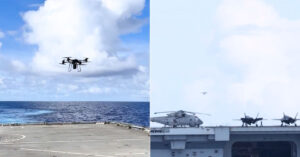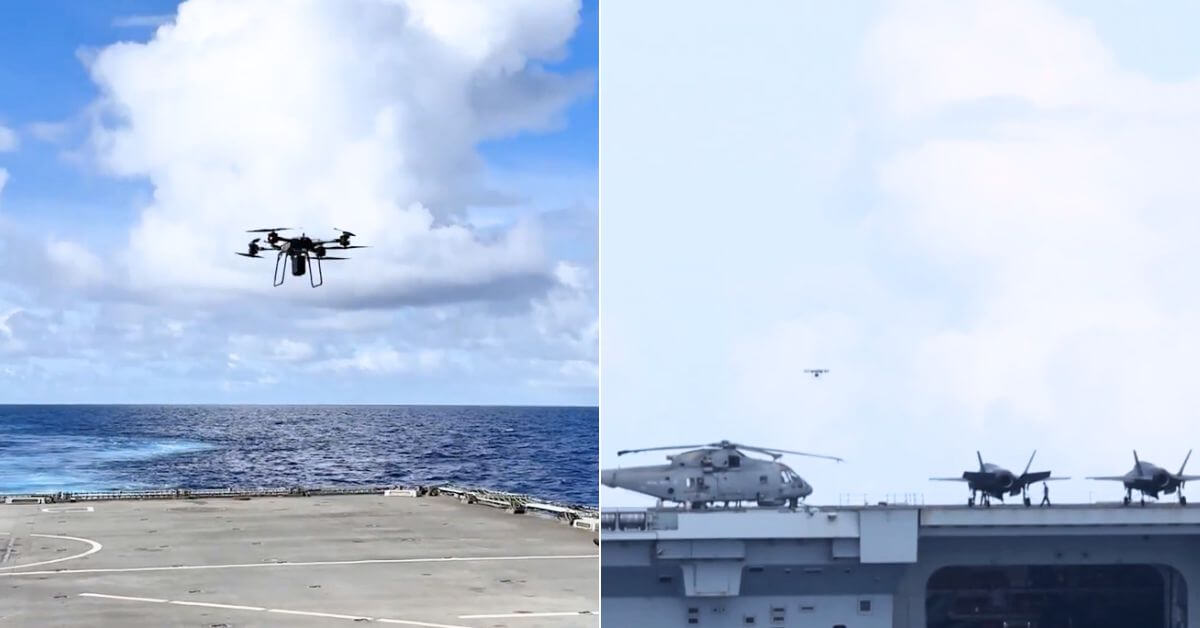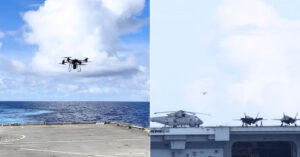
Italian Dockworkers Warn To Block Israeli Cargo If Gaza Aid Flotilla Is Stopped
September 2, 2025
19 Seafarers Stranded For 15 Months On UAE-Based Tanker Without Flag Or Insurance
September 2, 2025

The Royal Navy has achieved a historic first by delivering supplies between warships with a British-made drone during its 2025 Indo-Pacific mission.
As part of the UK Carrier Strike Group deployment, a Malloy T-150 quadcopter flew from the flagship HMS Prince of Wales to HMS Dauntless, a Type 45 guided missile destroyer.
The aircraft carried vital supplies, including spare and repair parts, marking the first time such a delivery was made ship-to-ship using a drone.
The drone took off autonomously and flew just over a mile before the crew on Dauntless took control to guide it onto the destroyer’s flight deck for a safe landing.
This trial aims to provide a cheaper and more efficient option than helicopters or boats for transferring goods between vessels. By doing so, helicopters and boats can be freed up to concentrate on operational and combat-related duties.
Drone deliveries…
For the first time, the #RoyalNavy has delivered supplies from one warship to another using a drone. The Malloy T-150 brought critical parts for repairs from @HMSPWLS to @HMSDauntless during the global #CSG25 mission.
Read more: https://t.co/reTYGdNhtd pic.twitter.com/5wI1upC7lr
— Royal Navy (@RoyalNavy) September 1, 2025
The test is part of the Royal Navy’s plan to develop hybrid air wings for its Queen Elizabeth-class carriers. These wings are expected to combine fast jets, long-range weapons, and advanced drones.
The Royal Navy said this trial was a milestone for 700X Naval Air Squadron, which is leading the work with the Malloy system. During Operation Highmast, the strike group’s eight-month deployment in the Indo-Pacific, the drones have already flown more than 20 hours of sorties and completed nearly 150 deck landings.
The Malloy T-150 is an eight-bladed drone operated by a two-person crew. It can carry payloads of up to 68 kilograms and fly at speeds reaching 60 miles per hour.
The system was built by Malloy Aeronautics, a British company acquired by BAE Systems in February 2024. The firm designs uncrewed air systems for both military and civilian purposes.
Royal Navy commanders said using drones for logistics would free up helicopters for key missions like surveillance and anti-submarine warfare. They added that the trial could lead to drones being used for more tasks, even combat.
Reference: Royal Navy
Source: Maritime Shipping News


